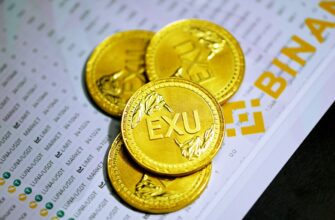## Introduction
In the volatile world of cryptocurrency, stablecoins like Tether (USDT) and USD Coin (USDC) provide crucial price stability. Both pegged 1:1 to the US dollar, they dominate the $130B+ stablecoin market. But what sets them apart? This comprehensive guide examines USDT vs USDC across security, transparency, adoption, and real-world utility to help you make informed decisions.
## What Are Stablecoins?
Stablecoins are cryptocurrencies designed to maintain consistent value by pegging to stable assets like fiat currencies. Key functions include:
– Hedging against crypto volatility
– Facilitating faster cross-border transactions
– Enabling DeFi lending/borrowing
– Serving as trading pairs on exchanges
## Tether (USDT) Deep Dive
Launched in 2014, USDT is the oldest and most widely adopted stablecoin with a $83B market cap (CoinMarketCap, Q3 2023).
**Key Characteristics:**
– Issued by Tether Limited
– Backed by reserves including cash, cash equivalents, and other assets
– Available on 100+ exchanges including Binance and Coinbase
– Supports 14 blockchains (Ethereum, Tron, Solana etc.)
**Transparency Concerns:**
Tether publishes quarterly reserve reports, though critics note:
– Historical lack of full audits
– Past settlements with NYAG ($18.5M fine in 2021)
– Commercial paper previously comprised ~50% of reserves (now phased out)
## USD Coin (USDC) Explained
Launched in 2018 by Centre Consortium (Circle and Coinbase), USDC boasts a $26B market cap with rigorous compliance:
**Defining Features:**
– Monthly attestations by top accounting firms (e.g., Deloitte)
– Reserves held 100% in cash and 3-month U.S. Treasuries
– Regulatory-first approach with FINRA-registered issuer
– Integrated into Visa’s payment network
**Key Advantages:**
– Real-time redemption via Circle Account
– ISO 20022 compliance for institutional use
– Growing DeFi integration (Aave, Compound)
## USDT vs USDC: Critical Differences
| Factor | USDT | USDC |
|——–|——|——|
| **Issuer** | Tether Limited | Centre Consortium (Circle/Coinbase) |
| **Reserve Transparency** | Quarterly reports | Monthly attestations |
| **Primary Backing** | Cash, Treasuries, corporate bonds | Cash & U.S. Treasuries |
| **Regulatory Status** | Limited oversight | FinCEN-registered, NYDFS-approved |
| **Transaction Speed** | Varies by blockchain | Consistent across chains |
| **DeFi Adoption** | Higher liquidity | Faster growth in protocols |
## Practical Use Cases Compared
**When to Use USDT:**
– Trading on Asian exchanges (e.g., Huobi, OKX)
– Lower transaction fees on Tron network
– High-liquidity arbitrage opportunities
**When USDC Excels:**
– Regulatory-compliant business operations
– Institutional treasury management
– Cross-border payroll via Circle API
– USDC rewards programs (e.g., Coinbase Card)
## Risk Analysis: Pros and Cons
**USDT Advantages:**
– ✓ Unmatched liquidity (24h volume 2x USDC)
– ✓ Wider exchange support
– ✓ Lower slippage in large trades
**USDT Risks:**
– ✗ Regulatory uncertainty
– ✗ Historical reserve controversies
**USDC Advantages:**
– ✓ Regulatory clarity
– ✓ Full-reserve transparency
– ✓ Banking partnerships (e.g., BlackRock)
**USDC Risks:**
– ✗ Lower liquidity on some platforms
– ✗ Potential over-reliance on U.S. banking system
## Which Should You Choose?
Consider these factors:
1. **Traders:** USDT for liquidity and fee efficiency
2. **Institutions:** USDC for compliance and treasury
3. **DeFi Users:** Check protocol preferences (e.g., MakerDAO favors USDC)
4. **Long-term Holders:** USDC for perceived lower counterparty risk
## Conclusion
While USDT leads in market share and liquidity, USDC sets the standard for transparency and regulatory compliance. For most users, diversifying between both stablecoins balances accessibility with risk management. As regulatory frameworks evolve, expect continued competition driving innovation in both projects.
## Frequently Asked Questions
**Q: Is USDT safer than USDC?**
A: USDC generally has stronger regulatory oversight and transparent reserves. USDT carries historical baggage but remains highly liquid.
**Q: Can USDT or USDC lose its peg?**
A: Both briefly depegged during 2023 banking crises (USDC to $0.87, USDT to $0.95), but recovered quickly due to redemption mechanisms.
**Q: Which has lower transaction fees?**
A: Fees depend on blockchain networks, not the stablecoin itself. USDT on Tron typically offers the lowest costs.
**Q: Are reserves fully audited?**
A: USDC undergoes monthly attestations by top auditors. USDT provides quarterly reports but hasn’t completed a full audit since inception.
**Q: Which is better for earning yield?**
A: USDC often offers higher APY in regulated platforms (e.g., 5% on Coinbase vs 2% for USDT). Always check current rates.
**Q: Can I convert USDT to USDC?**
A: Yes, instantly on most exchanges (e.g., Kraken, Uniswap) with minimal fees. Monitor spread during volatility.








